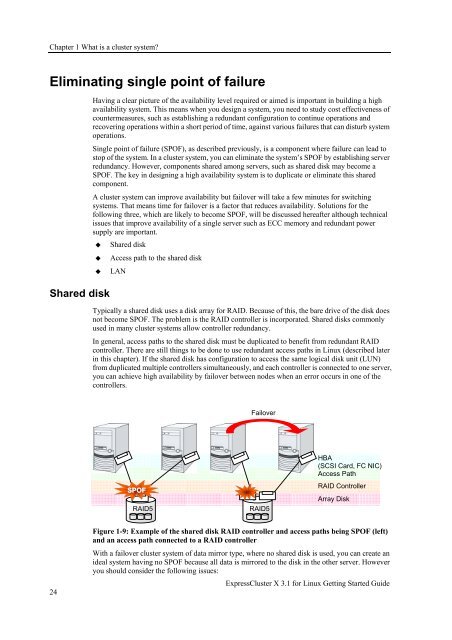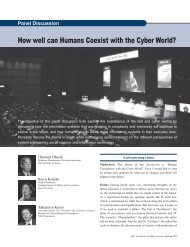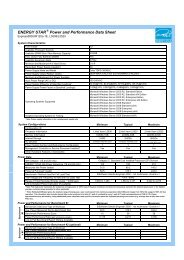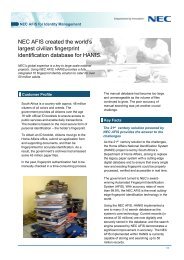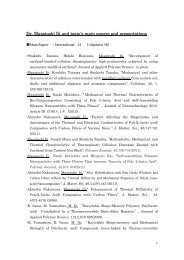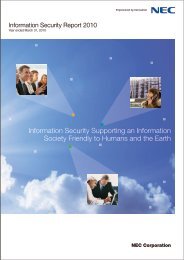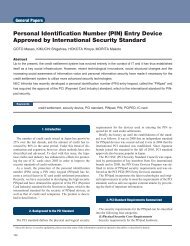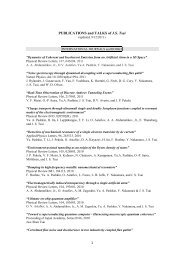ExpressCluster X 3.1 for Linux Getting Started Guide - Nec
ExpressCluster X 3.1 for Linux Getting Started Guide - Nec
ExpressCluster X 3.1 for Linux Getting Started Guide - Nec
You also want an ePaper? Increase the reach of your titles
YUMPU automatically turns print PDFs into web optimized ePapers that Google loves.
Chapter 1 What is a cluster system?Eliminating single point of failureHaving a clear picture of the availability level required or aimed is important in building a highavailability system. This means when you design a system, you need to study cost effectiveness ofcountermeasures, such as establishing a redundant configuration to continue operations andrecovering operations within a short period of time, against various failures that can disturb systemoperations.Single point of failure (SPOF), as described previously, is a component where failure can lead tostop of the system. In a cluster system, you can eliminate the system’s SPOF by establishing serverredundancy. However, components shared among servers, such as shared disk may become aSPOF. The key in designing a high availability system is to duplicate or eliminate this sharedcomponent.A cluster system can improve availability but failover will take a few minutes <strong>for</strong> switchingsystems. That means time <strong>for</strong> failover is a factor that reduces availability. Solutions <strong>for</strong> thefollowing three, which are likely to become SPOF, will be discussed hereafter although technicalissues that improve availability of a single server such as ECC memory and redundant powersupply are important. Shared diskShared diskAccess path to the shared diskLANTypically a shared disk uses a disk array <strong>for</strong> RAID. Because of this, the bare drive of the disk doesnot become SPOF. The problem is the RAID controller is incorporated. Shared disks commonlyused in many cluster systems allow controller redundancy.In general, access paths to the shared disk must be duplicated to benefit from redundant RAIDcontroller. There are still things to be done to use redundant access paths in <strong>Linux</strong> (described laterin this chapter). If the shared disk has configuration to access the same logical disk unit (LUN)from duplicated multiple controllers simultaneously, and each controller is connected to one server,you can achieve high availability by failover between nodes when an error occurs in one of thecontrollers.FailoverSPOFRAID5RAID5HBA(SCSI Card, FC NIC)Access PathRAID ControllerArray Disk24Figure 1-9: Example of the shared disk RAID controller and access paths being SPOF (left)and an access path connected to a RAID controllerWith a failover cluster system of data mirror type, where no shared disk is used, you can create anideal system having no SPOF because all data is mirrored to the disk in the other server. Howeveryou should consider the following issues:<strong>ExpressCluster</strong> X <strong>3.1</strong> <strong>for</strong> <strong>Linux</strong> <strong>Getting</strong> <strong>Started</strong> <strong>Guide</strong>


